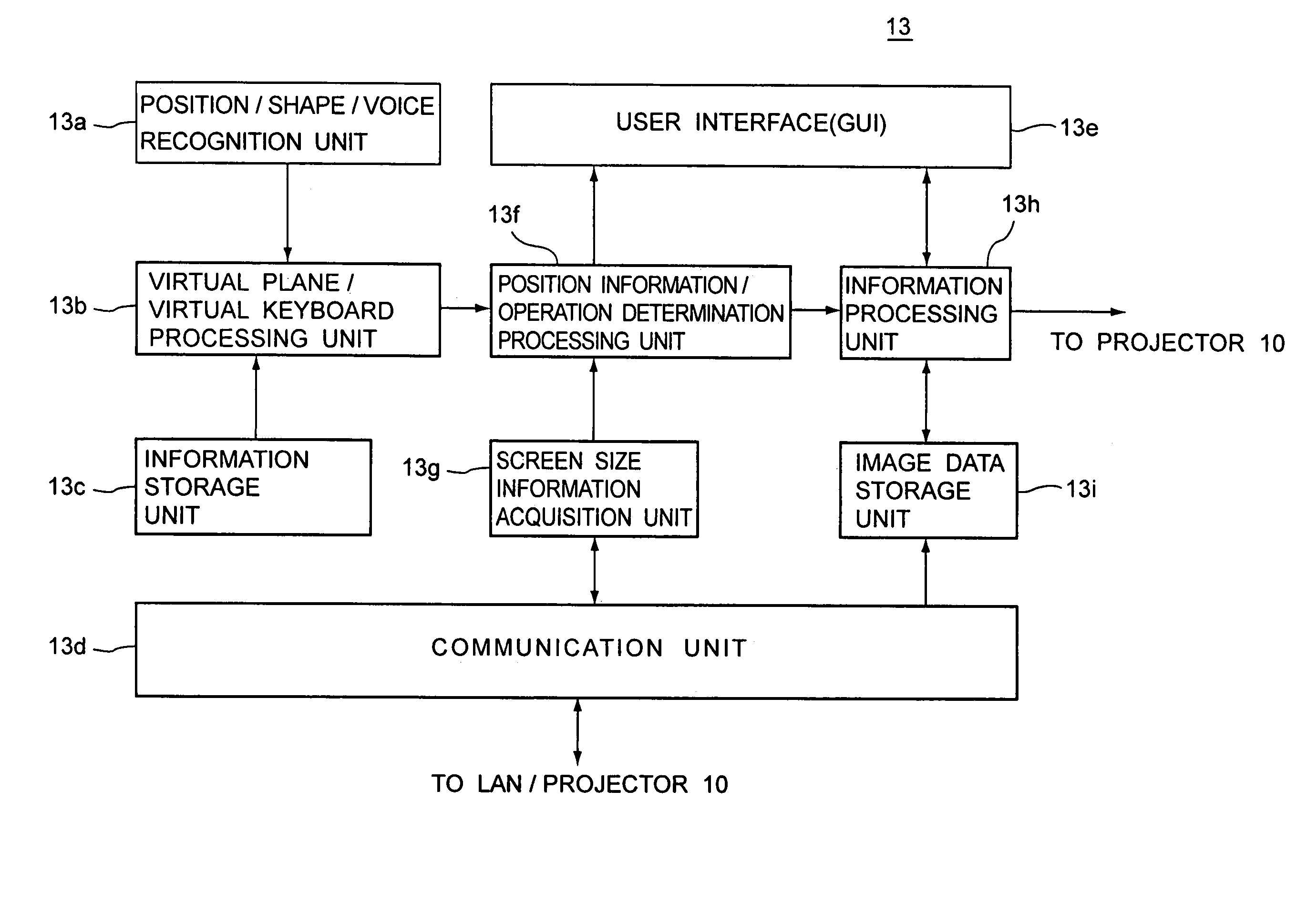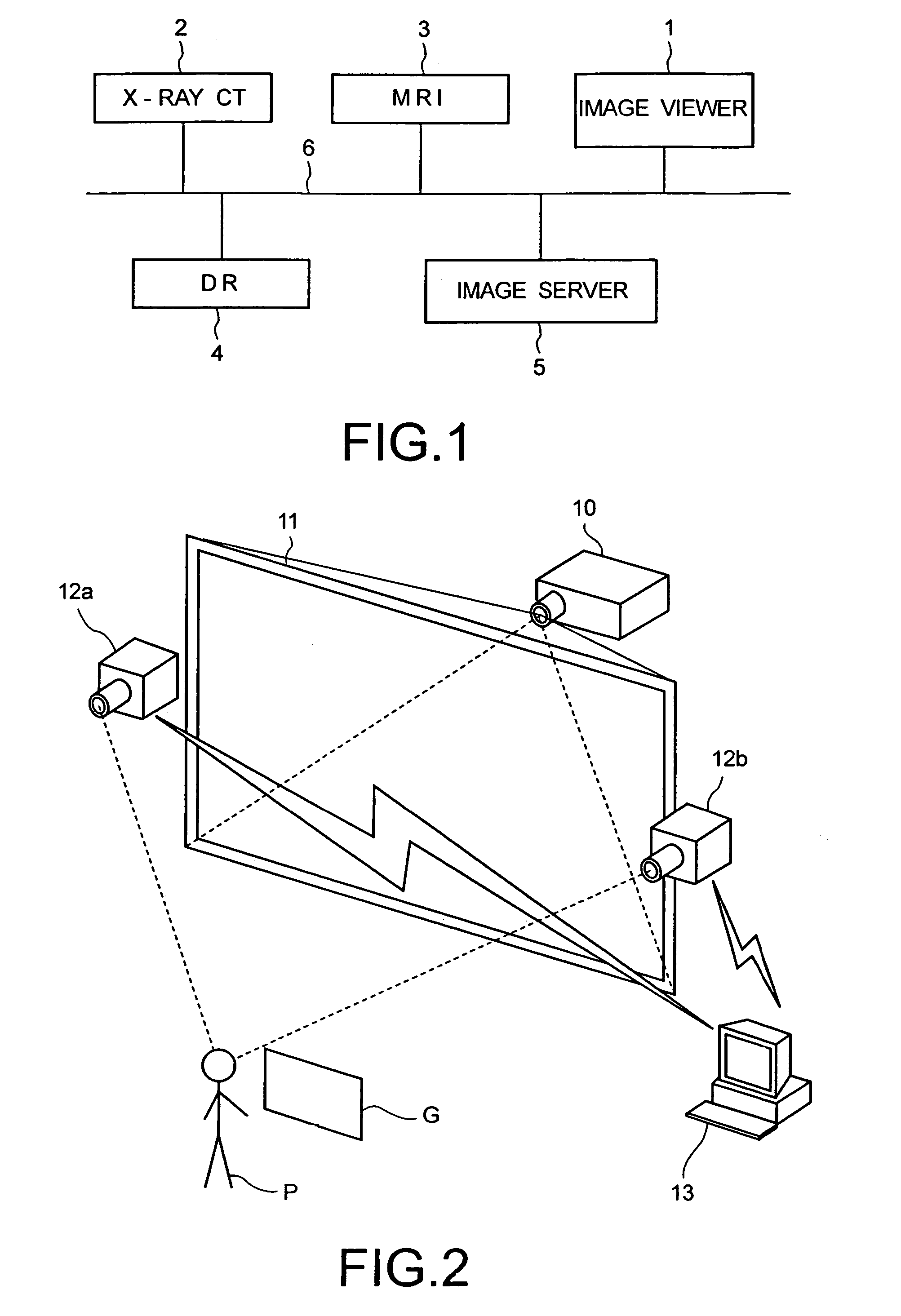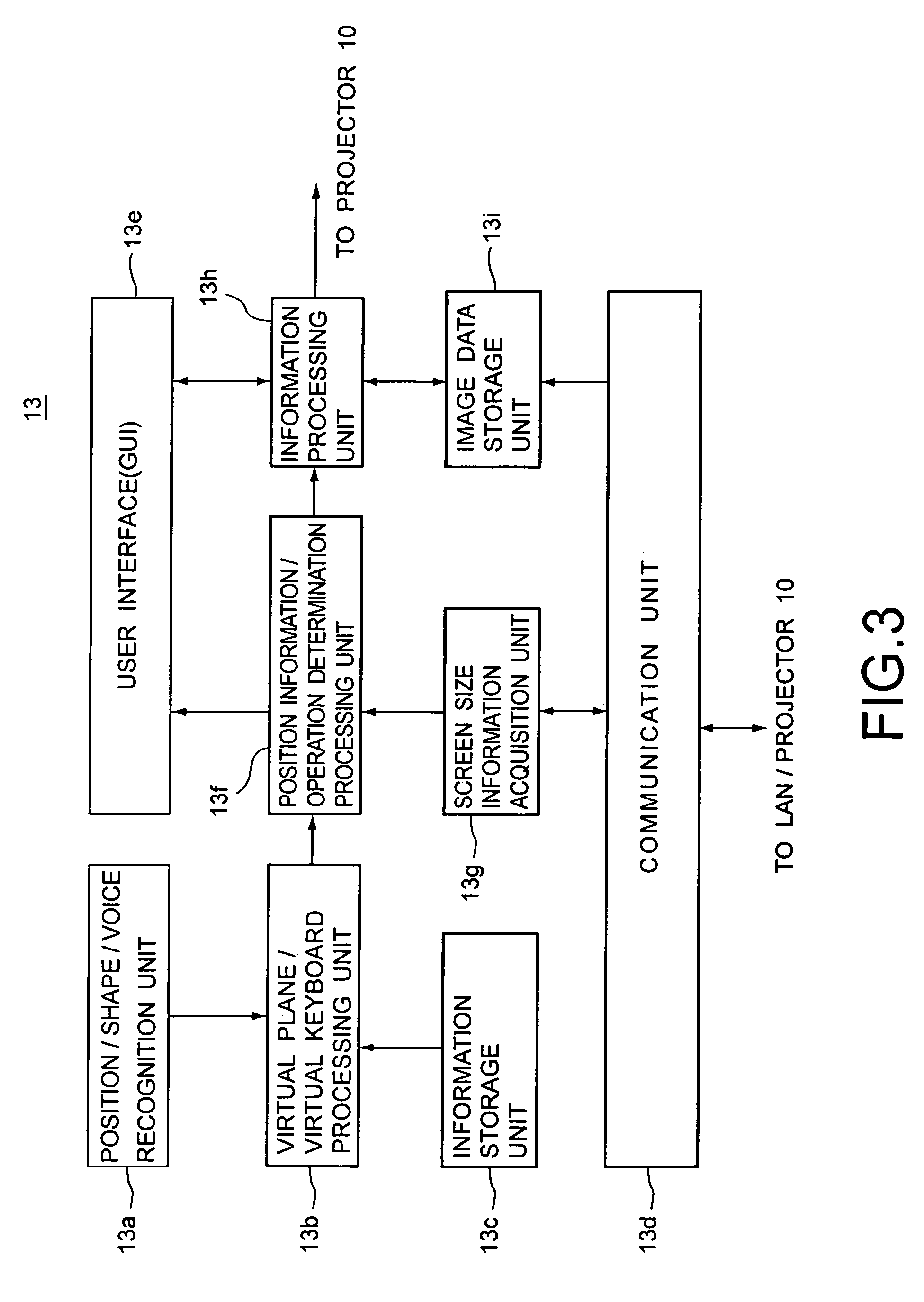Operation recognition system enabling operator to give instruction without device operation
- Summary
- Abstract
- Description
- Claims
- Application Information
AI Technical Summary
Benefits of technology
Problems solved by technology
Method used
Image
Examples
first embodiment
[0033]FIG. 1 is a block diagram showing an exemplary medical image display system according to a first embodiment of the present invention. As shown in FIG. 1, the medical image display system includes an image viewer 1, an X-ray computed tomography apparatus 2, a magnetic resonance imaging apparatus 3, a digital radiography apparatus 4, and an image server 5.
[0034]The image viewer 1 includes a display for displaying-images and an input unit for inputting information or instructions. The display may also be used to display medical examination reports based on medical image interpretations. The input unit includes a keyboard, a mouse, and / or an operation panel. The X-ray computed tomography apparatus 2, the magnetic resonance imaging apparatus 3, and the digital radiography apparatus 4 acquire medical images, respectively. The digital radiography apparatus 4 is used in combination with an X-RAY fluoroscopy (not shown in FIG. 1) and digitally processes X-ray images. The acquired medic...
second embodiment
[0094]A second embodiment of the present invention will regard of an X-ray fluoroscopy position change during a catheter operation as another example of the use of a virtual plane. FIG. 15 is an illustration showing an example of such a fluoroscopy position change through a virtual plane according to the second embodiment of the present invention.
[0095]FIG. 15(a) shows that a doctor S is inserting a catheter into a patient T from the inguina 151. The patient T is lying on a bed 152 which is a part of an X-ray diagnosis apparatus. During the catheter insertion, the X-ray diagnosis apparatus acquires fluoroscopic image data of the patient T. The fluoroscopy is implemented over a body part of the patient T where a head of the catheter is located. Fluoroscopic images based on the acquired image data are displayed by a display monitor 153 so that the doctor S can make visually verify through the display monitor 153 that the insertion is correctly being performed. The display monitor 153 ...
third embodiment
[0106]Operations through a virtual plane are also applied to other fields in everyday life. The virtual plane could be used to control any appliances that normally require physical manipulation to operate. Examples of such appliances might include, but not limited to: lighting fixtures, windows, heating systems, doors, stoves, and various other items capable of being controlled. A third embodiment of the present invention will regard of switching on / off of a fluorescent light fixed to a ceiling as one example. FIG. 16 is an illustration showing an example of such a switching through a virtual plane according to the third embodiment of the present invention.
[0107]As shown in FIG. 16(a), a user V is lying on a bed 161. In a room where the user V is lying, a fluorescent light 162 is fixed to a ceiling of the room. Similar to the first embodiment, there are provided video cameras 163a and 163b at both sides of the fluorescent light 162. The video cameras 163a and 163b acquire image data...
PUM
 Login to View More
Login to View More Abstract
Description
Claims
Application Information
 Login to View More
Login to View More - R&D
- Intellectual Property
- Life Sciences
- Materials
- Tech Scout
- Unparalleled Data Quality
- Higher Quality Content
- 60% Fewer Hallucinations
Browse by: Latest US Patents, China's latest patents, Technical Efficacy Thesaurus, Application Domain, Technology Topic, Popular Technical Reports.
© 2025 PatSnap. All rights reserved.Legal|Privacy policy|Modern Slavery Act Transparency Statement|Sitemap|About US| Contact US: help@patsnap.com



